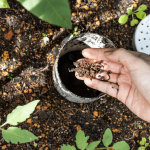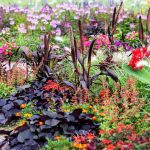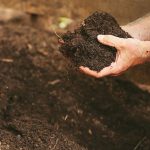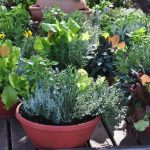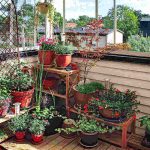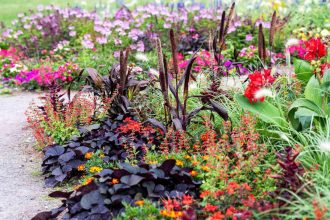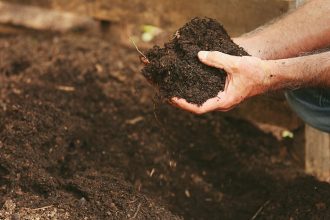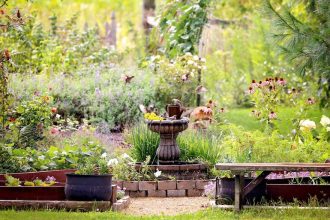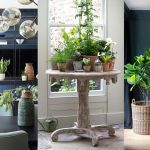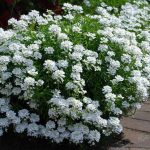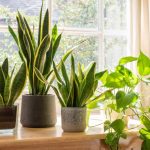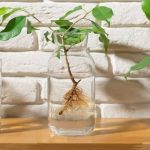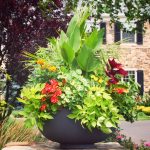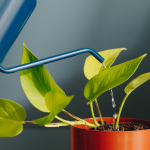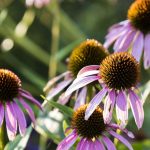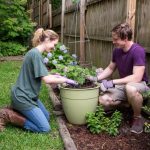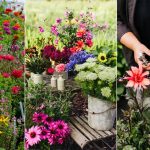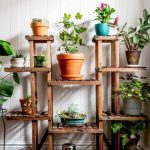Sprinkled with vibrant colors and sweet aromas, flower gardens are not just eye-catching oasis but also crucial habitats for various pollinators. From bees and butterflies to hummingbirds and beetles, these tiny creatures play a vital role in our ecosystem by aiding in the pollination process. In this article, we will explore the enchanting world of pollinators and provide tips on how to attract them to your very own flower garden. So grab your gardening gloves and get ready to create a buzzing paradise right in your backyard.

Creating a Pollinator-Friendly Habitat in Your Garden
is not only beneficial for the environment, but it also adds beauty and vibrancy to your outdoor space. By following a few simple steps, you can attract a variety of pollinators, such as bees, butterflies, and hummingbirds, to help your flowers thrive.
One way to attract pollinators is to plant a diverse selection of flowers that bloom at different times throughout the year. This will provide a consistent food source for pollinators and encourage them to visit your garden regularly. Some popular choices for attracting pollinators include lupine, bee balm, coneflower, and lavender.
In addition to planting a variety of flowers, it is important to provide shelter and nesting sites for pollinators. You can create homes for bees by installing bee hotels or leaving areas of bare, undisturbed soil for ground-nesting bees. Providing a water source, such as a shallow dish with rocks for butterflies to perch on, can also attract pollinators to your garden.
By taking these steps to create a pollinator-friendly habitat in your garden, you can enjoy a thriving and beautiful outdoor space while also supporting the important work of pollinators in our ecosystem.
Selecting the Right Flowers and Plants to Attract Pollinators
When it comes to creating a thriving pollinator-friendly garden, selecting the right flowers and plants is key. By choosing the right vegetation, you can attract a wide variety of pollinators such as bees, butterflies, and hummingbirds to your garden.
When selecting flowers and plants to attract pollinators, consider the following:
- Native Plants: Opt for native plants as they are well adapted to the local environment and provide nectar and pollen for pollinators.
- Colorful Flowers: Brightly colored flowers like purple, blue, yellow, and pink are more attractive to pollinators.
- Continuous Bloom: Choose plants that bloom at different times of the year to provide a consistent food source for pollinators.
| Plants | Benefits |
|---|---|
| Lavender | Attracts bees and butterflies with its fragrant flowers. |
| Coneflowers | Provide nectar for bees and butterflies and seeds for birds. |
| Milkweed | Essential for monarch butterflies as it is the only plant their caterpillars can feed on. |
By incorporating a variety of flowers and plants that cater to the different needs of pollinators, you can create a beautiful and vibrant garden that is sure to attract these important creatures.
Implementing Sustainable Gardening Practices to Support Pollinators
If you want to create a thriving flower garden that attracts pollinators, implementing sustainable gardening practices is key. By taking steps to support pollinators, such as bees, butterflies, and hummingbirds, you can help ensure the health and biodiversity of your garden ecosystem.
One way to attract pollinators to your garden is to plant a variety of nectar-rich flowers. Be sure to choose a mix of flowers that bloom at different times throughout the year to provide a continuous food source for pollinators. Some popular options include:
- Lavender
- Sunflowers
- Butterfly Bush
- Coneflowers
| Flower | Color | Blooming Period |
|---|---|---|
| Lavender | Purple | Spring to Summer |
| Sunflowers | Yellow | Summer to Fall |
| Butterfly Bush | Pink, Purple | Summer to Fall |
In addition to planting pollinator-friendly flowers, providing water sources such as a shallow dish of water with rocks for perching can help attract butterflies and birds. Avoid using pesticides and opt for natural methods of pest control to protect pollinators in your garden. By creating a welcoming environment for pollinators, you can enjoy a beautiful garden while supporting essential wildlife in your backyard.
Maintaining a Healthy and Diverse Garden Ecosystem for Pollinators
One of the most effective ways to attract pollinators to your flower garden is by planting a variety of native plants that bloom at different times throughout the year. This will provide a continuous source of food for pollinators and encourage them to stay in your garden longer. Additionally, planting a diverse range of flowers will attract a wider variety of pollinators, including bees, butterflies, and hummingbirds.
Creating a welcoming habitat for pollinators also involves providing them with suitable shelter and nesting sites. Installing bee houses, butterfly boxes, and bird baths can help create a more inviting environment for pollinators to thrive. In addition, reducing pesticide use in your garden will further support the health and well-being of these important creatures.
Another important factor in maintaining a healthy garden ecosystem for pollinators is ensuring that there is a source of water readily available. This can be as simple as setting up a shallow dish with stones for butterflies, or installing a small fountain for birds to drink from. By incorporating these elements into your garden, you can create a vibrant and diverse ecosystem that will attract and support pollinators for years to come.
As you tend to your flower garden, remember that attracting pollinators is not only beneficial for your plants, but also essential for our ecosystem. By following the tips outlined in this article, you can create a beautiful and vibrant garden that will buzz with life. So, go ahead and plant those native flowers, provide water sources, and avoid harmful pesticides to create a haven for the pollinators. Together, we can all play a part in supporting these important creatures. Happy gardening!


